This site contains affiliate links. As an Amazon Associate, I earn a commission from qualifying purchases at no extra cost to you. Full Disclosure Here.
About a month ago, I learned that it was possible not only to test old alkaline batteries to see if they are still are usable but also that, with the right type of charger, you can bring dead batteries back to life and that you can actually recharge alkaline batteries. To be quite honest, I was blown away.
Being a dutiful citizen of the world, when a flashlight, computer mouse or portable electronic gizmo such as a remote control stopped working, I dumped the old batteries into my recycle box and installed some new ones. Of course not being wasteful, I favored the use of rechargeable batteries and was quite proud of my collection of various sized Eneloop batteries which hold their charge for up to three years, even while sitting on the shelf.
First, a quick note on the “tools used” for this project:
- Cheap Battery Tester: Check this one out on Amazon.
- Universal Rapid Battery Charger: Check it out at this Amazon listing.
- Inexpensive Battery Storage Case: This is the one used in this tutorial.
A LADY ON A MISSION
Do you every get a bug in your bum and decide that nothing will stop you from the mission or task at hand? Well, that was me. I wanted to prove to myself that old alkaline batteries were still usable and further, as Dennis Evers (Preparedness is Fundamental) says, you can have free batteries for life.
The first thing I needed to do was to gather up the gear:
Old “dead” alkaline batteries
Battery tester simple enough to use without a Ph.D. in electronics
Battery charger designed specifically for alkaline batteries
Test gear such as flashlights, remote controls, wireless headphones and more
Simple enough although I did have to purchase the tester and the charge. But more on that later.
SORT THROUGH THE BATTERIES AND CULL THE DUDS
For years I have been saving all of my old batteries in a box in the garage, thinking that one of these days I would find someplace to recycle them. Where I live that is easier said than done so the box was pretty darn full which was great because that meant I had a lot of raw material to work with.
My Box of “Dead” Batteries
While waiting for my battery tester and alkaline charger to arrive, I sorted through the box, weeding out any leakers as well as odd ball batteries such as cell phone and hearing aid batteries. According to Wikipedia, the reason a battery leaks is this:
As batteries discharge — either through usage or gradual self-discharge — the chemistry of the cells changes and some hydrogen gas is generated. This out-gassing increases pressure in the battery. Eventually, the excess pressure either ruptures the insulating seals at the end of the battery, or the outer metal canister, or both. In addition, as the battery ages, its steel outer canister may gradually corrode or rust, which can further contribute to containment failure.
Leaked Battery – Yuck
Surprisingly, most of the batteries in my box were clean. Something to keep in mind as you go through the sorting process is that if there is even a single leaker in the box, the residue can spread on to other batteries so it helps to have a rag handy to wipe each battery off to see if it is okay. If you even suspect that a battery has leaked, or if shows any rust or corrosion, don’t take a chance. Throw the baddies back into the recycle box.
WHO SAYS THAT DEAD BATTERY IS REALLY DEAD?
I purchased an inexpensive battery tester from Amazon. There was nothing special about it and it was easy to use. Plus, it had the ability to test 9V batteries as well as button batteries and the traditional AA, AAA, C and D sized batteries.
Simple Battery Tester
I then set to work, testing each and every battery in my box. Much to my surprise, there were a number of batteries that tested “fully charged”. It is interesting to note that many were 9 Volt batteries that came out of one of my carbon monoxide detectors. This leads me to believe that the detector is bad and not the batteries.
Furthermore, I now believe that what commonly happens is that, for example, a remote control or flashlight is dead. You dump the batteries into the recycle box and install new ones. Easy peasy. But in truth, perhaps only a single battery of the 2 or 3 are bad so in effect, you are dumping out 1 discharged battery and 2 or 3 perfectly usable batteries. I even proved this myself. Since I now keep one of these $8 testers in my desk drawer, when my wireless mouse died a couple of days ago, I found that only one of the two AAA batteries that I had removed was dead. The other was showing almost a full charge. Go figure.
The other thing, and something that makes me feel careless and stupid, there were some perfectly good rechargeable batteries in the box. Now, how the heck did that happen?
These were good!
And I thought these batteries were dead.
LET THE RECHARGING BEGIN
After reading reviews on various rechargers, I settled on the Maximal Power FC999 Universal Battery Charger. It wasn’t the most expensive available but according to a couple of the reviewers, this unit was exactly the same as a higher priced model. The difference was that this one is black and the other one was gray.
Maximal Power FC999 Universal Battery
Now here is the deal with this charger. It has four separate charging chambers that operate independently of each other. This means that you can mix and match battery sizes (AA, AAA, C, D) without a problem. It also has a center 9V battery chamber but I have not been able to figure out whether that piggybacks upon one of the adjacent chambers or whether it operates separately.
Note: this charger can also be used to charge Ni-cd and Ni-MH batteries but I only tested it on Alkaline batteries. There is a slider switch that allows you to select the type of batteries you are charging – they can not and should not be mixed and matched by type (although, as I mentioned, various sizes of the same type work just fine.)
There is no question that I experienced a bit of trepidation when I inserted the batteries into the charger for the first time. But there was no smoke and no explosion so I continued on.
A few seconds after you insert the batteries, the tester will recognize the status and the LED window will either say “CHA” (for charging) or “BAD” (for sorry, this is a bad battery and it cannot be charged). In addition, the following lights will glow:
- Red – Charging
- Green – Fully Charged
- Red Flashing – BAD
As I mentioned above, each of the four chambers operates independently so you could have a combination of these three options all going at once.
There is a chart in the manual that indicates that an AAA battery will take 2.5 hours to charge, an AA 5 hours, a C size 6 hours, and a D sized 10 hours. In my experience, however, they charge to the fully-charged, green light stage a lot sooner than that. Now here is the thing. Once fully charged, the charger switches to a trickle charge to keep the battery “at its optimum capacity” whatever that means.
My experience is that if you leave the recharged batteries in the charger overnight – or say for about 10 or 12 hours – you will get a much stronger charge. I say this because I first tested some batteries right after the green light came on. On my tester, they would register at about the half way mark in the fully-charged area. If I put them back in the charger, the green fully-charged light would come on right away but when I took them out the next morning, the tester showed them about 90% charged.
These batteries have been re-charged and are now usable
After doing this a few times, I realized that next on my bucket list was a tester that would give me the actual voltage of the re-charged battery. My brother and nephew – both electronics wizards – have one and tell me that is the only way to truly test the remaining juice left in a used battery.
OTHER TESTING NOTES
The little manual that came with the charger stated that alkaline batteries can be charged to 75 – 90% of their original capacity. It further said that the batteries should be fully drained before recharging but I found that as a practical matter, the fully drained batteries came up “BAD” and could not be recharged at all.
There is one more rather important note that I want to make. I checked on my recharged batteries about two weeks after storing them in a box in my utility cupboard. Much to my surprise, there were some new leakers. Now whether these were overlooked initially (had I wiped away the residue not realizing they were compromised) or a byproduct of the charging process – I do not know. Even more curious, they were all the Costco Kirkland brand batteries.
I had good luck charging the Duracell batteries
The manual also indicates that alkaline batteries should not be recharged more than 30 times. 30 times – holy moly – that seems like a lot of charging to me. For now, I will charge them once until I go through the pile and then start anew. But 30 times? I am going to play it safe and protect my devices by recharging no more than a dozen times if that.
SO REALLY, HOW DID THEY WORK?
Using the recharged batteries on low power devices such as mini LED flashlights and of course, my computer mouse, worked great. As a matter of fact, I can not tell the difference between the recharged Alkalines and standard rechargeables. On the other hand, the Survival Husband uses wireless headphones to watch TV and the recharged alkalines only last abut 8 hours as opposed to the typical 15 to 20 hours with standard Ni-mh rechargeables.
Flameless candles have burned steadily for 5 days
The recharged 9V battery worked especially well on my little Blocklite flashlight. This little flashlight has been on 24/7 since March 9th and today for the first time I noticed the LEDs starting to fade when all six LEDs are on. When I turn the switch to 2 LED mod, it is as bright as ever.
Blocklite Mini Flashlight in Day 7
Clearly, for now, at least, it appears that the recharged alkaline batteries are best suited for low-drain devices.
STORING THE BATTERIES
I purchased these inexpensive storage cases for my recharged batteries. They are really quite handy and I like that the six individual cases interlock and connect together to make a larger case. The rest of my spares are in the plastic pencil case you see pictured above.
I like these mini storage cases.
THE FINAL WORD
For a total investment of about $34, I now have what for all intents and purposes, a lifetime of free batteries. The reason I say “lifetime” is that my friends have indicated a willingness to give me all of their dead batteries and you can bet that many will still be either good as is or eligible for recharging.
Would I trust these recycled batteries in a survival situation – sure, if that is all I had, But of course, that is not the case. I still have a large supply of brand new alkaline batteries in all sizes plus a good supply of standard rechargeables (you know how I love those Eneloop rechargeables).
But as spare batteries to use day to day, heck, these are great. As my tests have proven, a recharged alkaline battery can keep a small LED flashlight going to over a week and a computer mouse for much longer than that. As a matter of fact, you might say I have become obsessed with using these recharged alkaline batteries. But that, of course, is a story for another time.
Additional Resource: If you also want to create the ultimate battery charging batteries with different power sources and methods, check out this resource on the best charging set-ups.
Bargain Bin: Here are links to the products mentioned in today’s article. I do hope you will consider the battery tester – it will definitely pay for itself by preventing you from recycling perfectly usable alkaline batteries.
Maximal Power FC999 Universal Battery Charger: This nicely built charger will charge AA, AAA, C, D, N, 9V, Ni-MH, Ni-CD, and Alkaline batteries. It has an LED display so that when you first put a battery in the charging bay, you know whether it is viable for charging or simply bad and ready to go back to the recycle box. Note: When I purchased the charger, it was on back order. Oddly, it actually shipped the next day. Go figure. Anyway, I am really sold on this charger and can recommend it without reservation.
Blocklite Mini Compact Size Ultra Bright 9V LED Flashlight: One of my readers (James) turned me on to these nifty little LED flashlights. They were great with re-charged 9V batteries. There is a similar flashlight called the Pak-Lite (which is more expensive) but it does not have a high-low switch like this one.
SE BT20 9-Volt Battery Tester You definitely should consider a battery tester even if you decide not to re-charge your alkalines. The advantage of having a tester is that when a gizmo dies, you can determine whether just a single battery is discharged and not the complete set.
SODIAL(TM) Battery Tester Volt Checker for 9V 1.5V and AA AAA Cell Batteries: This tester has a numeric display – something worth considering although may take two to three weeks to arrive.
AA / AAA 4 Cell Battery Storage Case (Bundle of Six Cases): I like these little cases. I put a sticker on the outside of the case indicating that these are re-charged batteries.
And for traditional rechargeable batteries:
Solar 11-in-1 Battery Charger: This is a universal charger that does what it is supposed to do. It uses sunlight to generate a current that charges pairs of batteries in sizes AAA, AA, C, or D and works great with my favorite Eneloop batteries.
Sanyo Eneloop 1500 Super Power Pack: This kit has it all, including 12 AA, 4 AAA, 2 C and D Spacers, a 4 position charger and storage case. This is the kit that I own.
~~~~~


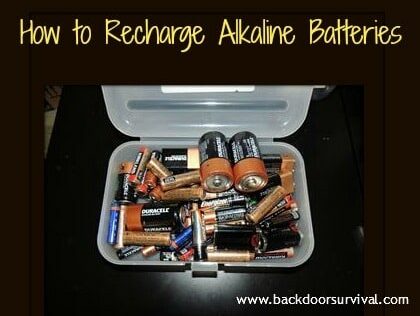

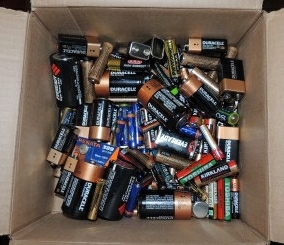
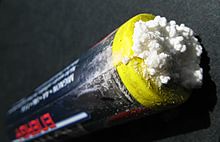
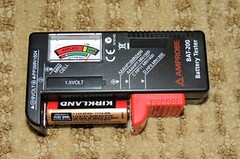
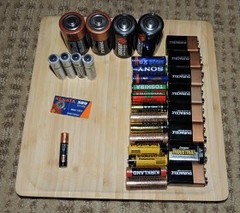

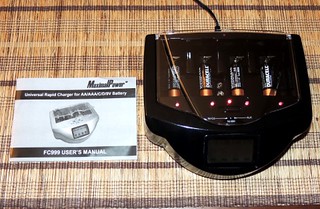
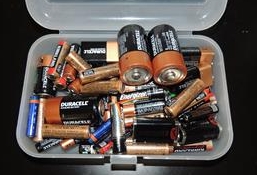
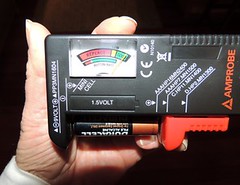
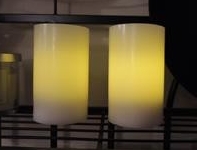










139 Responses to “How to Recharge Alkaline Batteries”
Gaye, I saw a video once about a home being burned from old batteries being stored prior to disposal. The 9 volt battery if still has a charge, which most do, can short out and spark. Most of us know the way to start a fire using a 9 volt battery and steel wool. Well, the same thing can happen when these are stored. I know this has to be the perfect situation, but when I put those in the pile, I take a piece of electrical tape and put over the terminals. Better to be safe than having to replace your home, or worse.
I also strongly agree with you about Kirkland batteries.
A couple of years ago I bought the Rosewill RGD-CT505 Battery Charger for AAA/AA Alkaline and Ni-MH Batteries on Amazon. I’ve got a battery tester I bought years ago from Radio Shack. My experience has been that the top quality brands of alkalines charge better and hold their charges longer, making them a better buy in the long run.
Under the “Bargain Bin” above she lists the Maximal Power FC999 Universal Battery Charger with a link to it on Amazon. You can find the same or similar elsewhere, just do a search for “alkaline battery charger”.
What type of charger are you using, I have been told you can’t use NiCad battery charger to charge alkaline batteries.
Hi Gaye…
I was wrong about the charger, I checked my old orders on Amazon and I did get the Maximal Power FC999. I also buy all by batteries at Costco but I don’t get the Kirkland brand…I get the other name brand they sell…is it Energizer??? In any event, it was the ‘good’ brand that was leaking some kind of goo from the bottom of the battery. I will be buying some good quality rechargeable from now on…the Eneloop look good. Thanks…nice to know you don’t write once and forget. Tell your good friend George that if he wants to stop his Gout, he needs to eat a Fat Free Yougurt every morning..he wont listen to me..:-)
So I did go ahead and buy the Burgess Battery Charger and proceeded to recharge the coffee can full of dead AA and AAA. Everything looks good – the charge meter I bought says they are recharged. I stored the re-charged batteries in empty plastic pill containers. I went to use some the other day and there was some kind of clear fluid leaking from the batteries – I checked all the containiers I had, 5, and they all had the same clear, viscus fluid coming from the batteriers. I dont know if all the batteries were leaking of not. Needless to say I did not and will not use the batteries in any of my electronics. Has anyone else had this happen after recharging alkaline batteries? Needless to say I will not try recharging alkaline batteries again.
Prepperdaddy – The only problem I have had is with the Costco Kirkland brand batteries. They are leaking some sort of white powder stuff and so I have not used them (nor will I purchase them again). This has happened to me with those Costco batteries even without re-charging them. There have been times when I open up my flashlight to change batteries and find that they have leaked inside making a big mess. I was glad they were not in my expensive electronics.
BTW, in my more expensive devices I still use the Sanyo Eneloop rechargables – those are the best.
Another thing is that my charger is a Maximal Power and not a Burgess.
You do have me wondering if all of your batteries were of a single brand. Other than the Costco brand, I have had no additional leakers. The Duracells seem to hold the charge the longest but that may simply be my perception.
Instead of purchasing specific type battery testers you might think about a voltage meter. You can get those at Wal-mart, Dollar General, Harbor Freight or about any place that sells tools, but these are the least expensive with a cost under $5. A voltmeter can not only test the voltage of any battery, but household voltage, test for shorts and more. I have found that certain irregular batteries like button type or a short AA called 2/3 AA, can be charged using some type of conductive material like a screw or bolt of the proper length to fill the space in the charger.
Yes but a volt meter (multitmeter) by itself places minimal load on the battery cell. The testers illustrated do draw a moderate amount of power (current) from the cell under test. A four ohm load, on my one. Giving a better indication of the overall health of the cell.
I use a Burgess battery charger for NiCD and carbon-zinc batteries. It will charge 9 volt batteries in about 5 hours. I have been using it on 9 volt carbon-zinc batteries for smoke detectors and it works fine. I check the voltage on the charger with my volt meter and it showed that it was only charging at about 1 volt. So far all of the 9 volt zinc-carbon batteries work fine in the smoke detectors. Now I wait until one start beeping and switch in 9 volt from my stockpile and recharge the old one. Much better than buying 9 volt batteries once a year. I do not know how many times the carbon-zinc 9v batteries can be recharged but I have a bunch.
Wow, that is really interesting. Thank you so much for posting this. I had always thought that it should be possible, somehow, to re-charge batteries, even just the normal ones.
Leaky fluid from batteries kind of scares me. I don’t know exactly why… it just seems like poisonous, disgusting chemical something. I think I’ll stay away from the Costco Kirkland batteries.
Hello to all who are recharging alkaline batteries.
As a knowledgeable electronic type I want to put a little “professional” spin on the battery situation. The fact that you have worked out a recharging program is good. The first thing I want to say is the recharged batteries may not have the same power capacity they did when brand new. Each time one is successfully recharged it will loose a bit more available power. They won’t last or recharge forever.
One poster mentioned the fire hazard of storing loose batteries. Yes keep them all lined up in the same direction with the cardboard spacers. 9 Volt batteries are the most dangerous to store loose. Put a piece of black electric tape over the terminals. If you bought the batteries in one of those 24 or 48 packs that would be a good place to restore them. One last comment a recharging battery could vent with some force so don’t have the charger located where it could cause harm.
Thanks for your insight, Bill. I have already reboxed my charged up batteries so they all line up in the same direction. I chose to only use one layer per box just to be on the safe side.
Good tip regarding the electrical tape – I plan to share you tips on an upcoming Sunday Survival Buzz.
Thanks for that last comment. I’m currently using my charger. I’ll be rehoming it as I leave this site. 🙂 Gaye, this charger works great and like you, I told people I would take their old batteries off their hands. lol I so love the looks! Thanks again Bill.